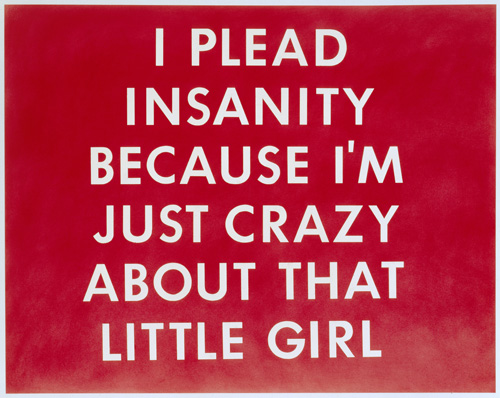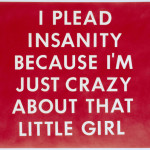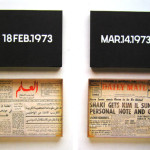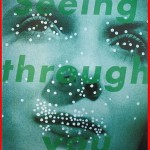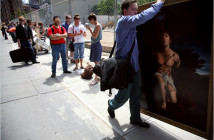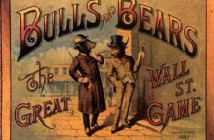ARTISTS & WRITERS; CANARIES
In his book A Whole New Mind, Daniel Pink predicts that the future will belong to the right-brained. His research shows that the people who have run the world of business and finance, of technology and medicine have made tremendous strides in improving life on the planet but it is those very accomplishments that have brought us up against a brick wall now. In order to continue evolving, to jumpstart the flaccid economy, the burden now falls on the shoulders of the intuitive thinkers, the creative innovators and folks whose brains don’t always focus on the details but who tend to see the big picture with clarity. Yay for artists, writers, musicians and all people whose parents worried about them making a living. This is not just about emotional intelligence but a clear acknowledgment of what Harvard’s Howard Gardner has been writing about for years: Artist envy, envy of the truly creative brain’s ability to drive humanity forward, in a good way.
So here’s the question: What if you are an artist but also love to write? Or if you can bang out a sentence with the best of them, most of the time except when you just crave a pencil and need to set the image in your head down as a drawing. Or you have photographed something, it spins your brain into filling in the blanks and you must write a story? Or your art practice pushes you into text a la Ed Ruscha, On Kawara, Jim Hodges, Felix Gonzalez-Torres and a whole army of graffiti artists?
You are at a party and someone who imports sunglasses from China is parked next to you on the couch. When he inquires about what you do can you stick your chest out and say, “I am an artist and a writer,” without choking on your edamame dip? Probably not, even though it may be true. What is that about? Do we have to pick one of two labels, lest we intimidate or amuse the inquirer?
Would William Blake, e.e. cummings, John Updike, Dylan Thomas, William Faulkner, James Thurber, Emily Bronte, Charles Baudelaire, T.S. Eliot, Antoine de Saint- Exupery, Federico Garcia-Lorca, Evelyn Waugh, Guillaume Apollinaire, Hermann Hesse, John Lennon, Tennessee Williams, Edgar Allan Poe, Henrik Ibsen, George Sand, Pearl Buck, Kahlil Gibran, Allen Ginsberg, Robert Louis Stevenson, Harriet Beecher Stowe and Johann Wolfgang Goethe have had issues with both writing masterpieces and sometimes drawing a few? Since you will recognize most of these names as belonging to some of our greatest writers and thinkers but not immediately identify them as artists, they have clearly chosen the moniker that either allowed them to feed their families or decided that the art they were making was personal, private, or not ready for prime time. Writing won them posterity’s ticket.
Yet as artists why do we often drool in front of old manuscripts, sepia-toned letters written with quills, old typewritten marks on onion skin. Why do we stand mesmerized at Asia House in New York watching, hearing the video of a calligrapher scratching out pages of the Koran? The full-body experience of witnessing the hand, the quill, the ink, the luscious paper coming together to tell a story is better than sex, and immediately bonded those of us who breathlessly watched. When the video ended we looked at each other embarrassed by the intimate hold the images had on four perfect strangers. Art and writing as religion. Wow.
Clearly there is a link in the brain of those who make art, and those who need to write: It is related to staring at a blank page. The urgent drive to scratch, drool, smear and transform that page (see James Castle) into a form of communication must go back to cave-dudes. Many writers working today prefer to hand write their stories, to feel the connection race from brain to page via their arm. The blinking cursor on the screen often infuses the experience with an urgency, a pressure to live up to the Nike moment before the thought is formalized. Or maybe they just like making the marks on that lovely yellow legal pad: Stay inside the line or ignore it?
Artists and writers mostly live off of the world that exists before them. Artists can draw (digitally, manually, sculpturally, photographically) an image, place it on a page, screen, space or pedestal and the viewer will be responsible for “seeing.” (Critics are introduced into this equation because their job is to help viewers “see” but they are writers who try to illuminate, rarely do they generate art themselves.) Writers describe objects, emotions, people and scenery and invite the reader to dream along with them. For the artists and writers among us it is that overwhelming impulse grip the audience that makes the difference. Life for those who must travel both these paths is one big game of Charades, fueled by the drive to tell the world what we’ve discovered, what we are questioning, using any means possible.
- Ed Ruscha, I PLEAD INSANITY BECAUSE I’M JUST CRAZY ABOUT THAT LITTLE GIRL, Pastel on paper, 1976.
- On Kawara, TODAY
- Barbara Krueger, Untitled (Seeing through you) , 2004.
Ruscha image found here.
Kawara image found here.
Krueger image found here.

